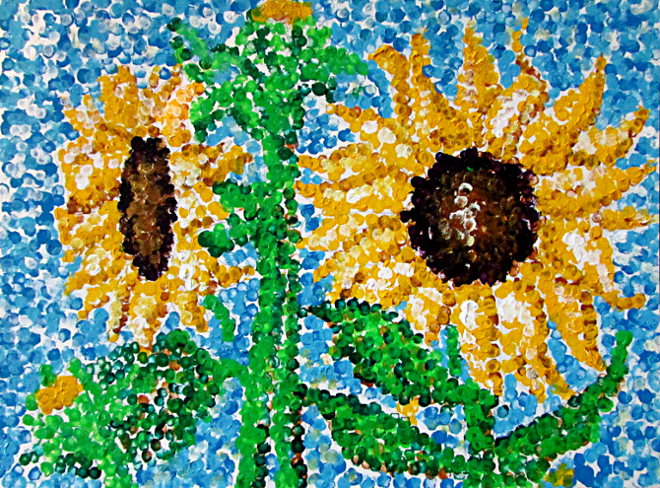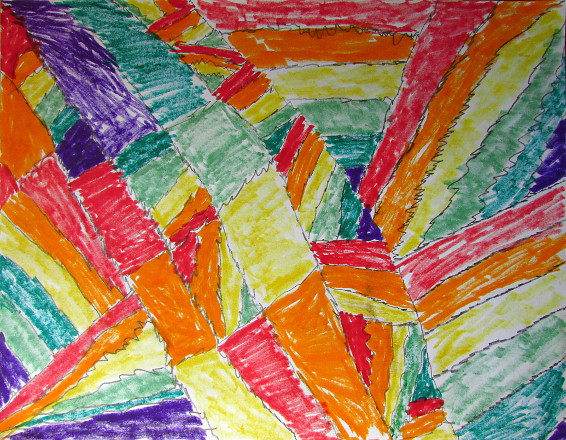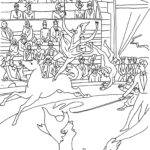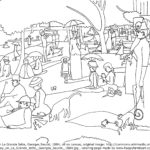I had a great time doing an art lesson on Georges Seurat. After all, who wouldn’t have fun with Pointillism. It is such a fun way of painting, and I love it. The kids loved it also. But let me start with some background on the father of Pointillism himself!
Some Facts About Georges Seurat:
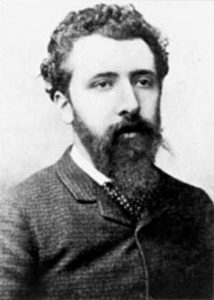
· He was a French Neo-Impressionist painter in the late 18th Century. He was born in 1859 and died in 1891.
· He believed that the artist could create mood, harmony and emotion in art by using colors and lines.
· He painted using small distinct dots of colors directly on the canvas, without mixing the paint. This way when you stand a distance away, the dots seem to blend in into the desired color.
· His style of painting is called Pointillism. If you look closely at his paintings you will see that they are made out of many tiny dots.
Here are two of his paintings:
Georges Seurat. A Sunday on La Grande Jatte. 1884-1886.
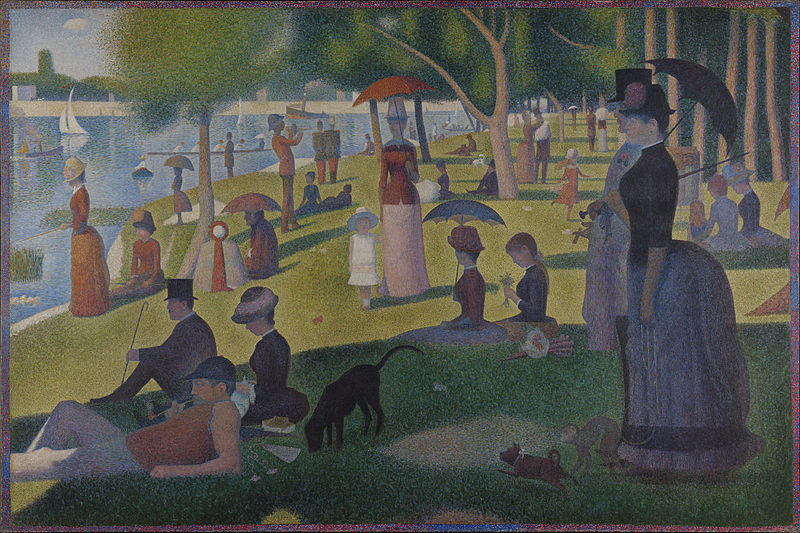
Georges Seurat. Cirque. 1891.
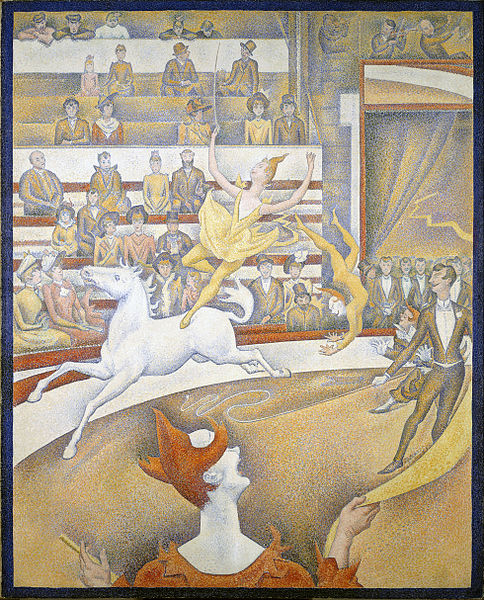
Make Your Own Pointillism Painting!
What you will need:
· Pencil to make a sketch with.
· Paint: acrylic, tempera or gouache.
· Surface to paint on: stretched canvas, canvas board, cardboard or heavy paper. Maybe even a cut out back of a cereal box!
· Something to squeeze paint out on: a paper plate, a regular plate, a paint palette, or a recycled Styrofoam tray.
· Cotton Swabs to make paint dots with.
Steps to create your painting:
1. Start out by thinking of the subject you would like to draw. You can draw anything you like: nature scene, portrait, flowers, animals, a beautiful sunset, a still life, and so much more.
2. Then sketch it out on your paper or canvas.
3. Squeeze a little bit of each color that you think you will need.
4. Use cotton swabs to paint in your sketch. Don’t mix the colors! For example, if you need to make a purple car, use blue and red dots to paint that car in. If you need lighter green and darker green, use green and yellow or white dots for the lighter area, and green and black or brown dots for the darker area. Play around with colors and have fun!
Here are some of our paintings:

This beautiful tree was painted by Mike C.
We also did an interesting side project. Seurat believed that art had a language, that using colors, lines, shapes, intensity, the artist could express different emotions in their art. He called this language of art Chromoluminarism. For example, he believed that warm colors and lines directed upwards could create the feeling of happiness and joy. Sadness would mean having lines directed down, and cool colors. Finally the feeling of calm, would naturally be the balance of the two: horizontal lines and a balance of warm and cool colors.
I gave the kids a small assignment. Pick an emotion you would like to express, and do so by only using lines and colors. There were all sorts of emotions in the room that day. We had happy, excited, sad, lonely, calm, relaxed, hyper, and so much more!
Here is a drawing done by one of the kids. Can you guess which emotion he was going for? If you guessed excited, you would be right!
While we were doing a lesson on Georges Seurat, I made a few coloring pages based on some of the paintings we looked at. Here they are for your enjoyment. Please keep in mind that the coloring pages I made are for personal and non-commercial use only!
If you would like to learn more about Georges Seurat, go here: http://www.biography.com/people/georges-seurat-9479599
